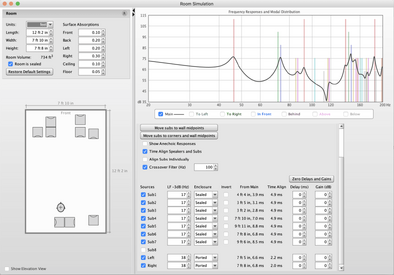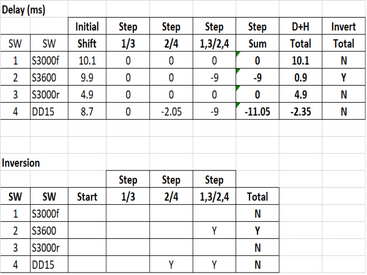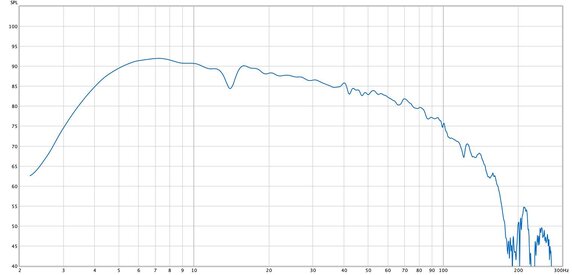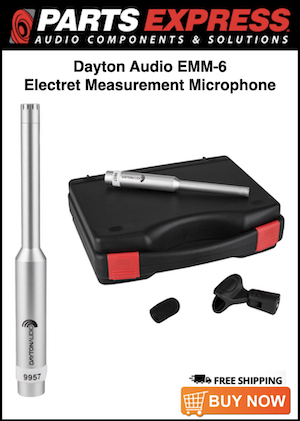Conrad.
New Member
Thread Starter
- Joined
- Jun 9, 2018
- Posts
- 57
More
- Preamp, Processor or Receiver
- Trinnov Altitude 16
- Main Amp
- Classe CT2300
- Additional Amp
- Classe CT5300
- Universal / Blu-ray / CD Player
- PS4
- Front Speakers
- B&W N802
- Front Wide Speakers
- B&W 601
- Center Channel Speaker
- B&W NHTM1
- Surround Speakers
- B&W N805
- Surround Back Speakers
- B&W 601
- Front Height Speakers
- B&W CCM682
- Rear Height Speakers
- B&W CCM682
- Subwoofers
- PSA S3000i x2, PSA S3600, Velodyne DD15
- Screen
- 100 inch
- Video Display Device
- JVC x9900 - Calibrated
- Remote Control
- Harmony Elite
I was reading this thread and it got me thinking that I could probably do with some similar help and/or confirmation.
I have a four sub set-up in a significantly smaller room. This is both good and bad as I get great room gain, but I have very limited positioning options, and the different positions I do have make very little difference to the response.
I'm running a PSA S3000 and an S3600 at the front, inside my main speakers.
Behind the couch on the back wall I have another S3000 and in the rear right corner I have a Velodyne DD15.
I have all subs connected to a miniDSP 2x4HD which is coming from a single sub out on my processor. This gives me a shared set of filters (5 bank PEAK only) for all subs, plus the full DSP in the miniDSP.
I have no Auto EQ.
Crossover is currently set to 100Hz with a 24dB/Octave slope. Main speakers are set to small.
I've attached a room sim showing my layout. As three of the subs are dual opposed I've added them as individual subs, one per driver.
Looking at the good feedback and analysis @Sonnie got, especially from @jtalden, I was hoping to achieve similar results.
Previously I had always measured each sub, EQd to flat (well, with a house curve) and then measured together. As I measured and added each sub to the combined response I would adjust the delay on the current sub until I got the smoothest response. So my process would be:
- Measure S3000 front, EQ to flat
- Measure S3600, EQ to flat
- Measure both S3000 front and S3600, adjusting the delay on the S3600 until I got positive summing across the whole range
- Repeat for the remaining subs
- The use the sub distance control in the processor to move the subs as a unit to integrate with the mains.
That had previously worked ok, but never gave me results I was delighted with.
Having read Sonnie's thread I noticed the advice was different. Measure all subs combined, then EQ the combined output, I'd like to give that a go.
I did read the longer steps which involve measuring flat before applying any kind of crossover, but my processor only allows up to 140Hz and the subs only allow up to 150Hz so I don't know it's going to tell me much different? I did run my measurements through Multi-Sub Optimizer, but that wasn't able to do much.
This morning I measured my subs with no EQ and no time alignment, individually, and a set. The result of all four with no EQ is actually pretty good. I have a couple of deep cancellations, but it's fairly smooth other than that. My waterfall isn't great below 20Hz, but I don't know I can do much about that without some serious bass traps that I just don't have the room for.
I've attached a couple of MDAT files. One is just the subs this morning, no EQ, one is from yesterday which is full range mains, as full range as I can get on the subs (140Hz) and multiple positions.
So, my questions:
- is there anything I can do to remove those dips in the un-EQ response?
- Anything else I should be measuring or looking at?
I'll be honest, I've never had much success understanding phase. I get it in theory, but I don't know what I'm doing in practice and everything I change either doesn't work as I expect or makes thing better in one place and worse somewhere else.
Thanks, apologies for the long, rambling post.
I have a four sub set-up in a significantly smaller room. This is both good and bad as I get great room gain, but I have very limited positioning options, and the different positions I do have make very little difference to the response.
I'm running a PSA S3000 and an S3600 at the front, inside my main speakers.
Behind the couch on the back wall I have another S3000 and in the rear right corner I have a Velodyne DD15.
I have all subs connected to a miniDSP 2x4HD which is coming from a single sub out on my processor. This gives me a shared set of filters (5 bank PEAK only) for all subs, plus the full DSP in the miniDSP.
I have no Auto EQ.
Crossover is currently set to 100Hz with a 24dB/Octave slope. Main speakers are set to small.
I've attached a room sim showing my layout. As three of the subs are dual opposed I've added them as individual subs, one per driver.
Looking at the good feedback and analysis @Sonnie got, especially from @jtalden, I was hoping to achieve similar results.
Previously I had always measured each sub, EQd to flat (well, with a house curve) and then measured together. As I measured and added each sub to the combined response I would adjust the delay on the current sub until I got the smoothest response. So my process would be:
- Measure S3000 front, EQ to flat
- Measure S3600, EQ to flat
- Measure both S3000 front and S3600, adjusting the delay on the S3600 until I got positive summing across the whole range
- Repeat for the remaining subs
- The use the sub distance control in the processor to move the subs as a unit to integrate with the mains.
That had previously worked ok, but never gave me results I was delighted with.
Having read Sonnie's thread I noticed the advice was different. Measure all subs combined, then EQ the combined output, I'd like to give that a go.
I did read the longer steps which involve measuring flat before applying any kind of crossover, but my processor only allows up to 140Hz and the subs only allow up to 150Hz so I don't know it's going to tell me much different? I did run my measurements through Multi-Sub Optimizer, but that wasn't able to do much.
This morning I measured my subs with no EQ and no time alignment, individually, and a set. The result of all four with no EQ is actually pretty good. I have a couple of deep cancellations, but it's fairly smooth other than that. My waterfall isn't great below 20Hz, but I don't know I can do much about that without some serious bass traps that I just don't have the room for.
I've attached a couple of MDAT files. One is just the subs this morning, no EQ, one is from yesterday which is full range mains, as full range as I can get on the subs (140Hz) and multiple positions.
So, my questions:
- is there anything I can do to remove those dips in the un-EQ response?
- Anything else I should be measuring or looking at?
I'll be honest, I've never had much success understanding phase. I get it in theory, but I don't know what I'm doing in practice and everything I change either doesn't work as I expect or makes thing better in one place and worse somewhere else.
Thanks, apologies for the long, rambling post.












